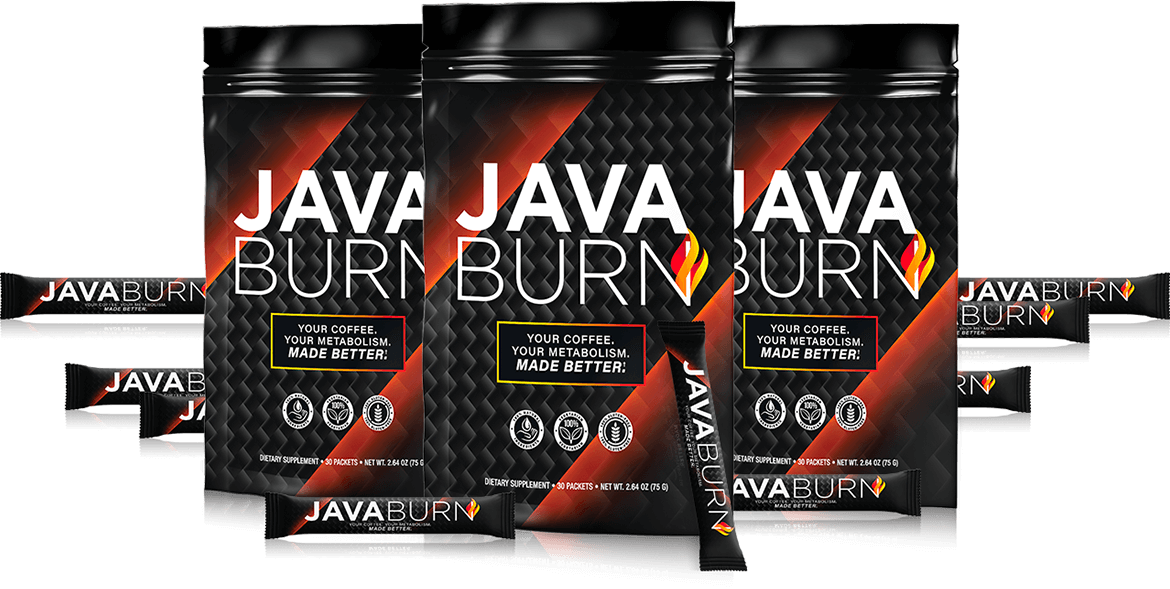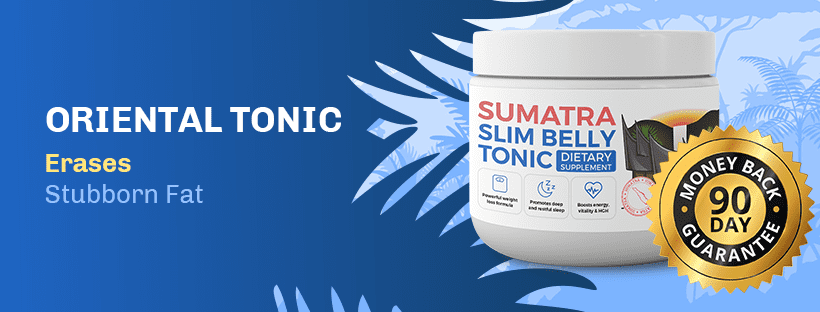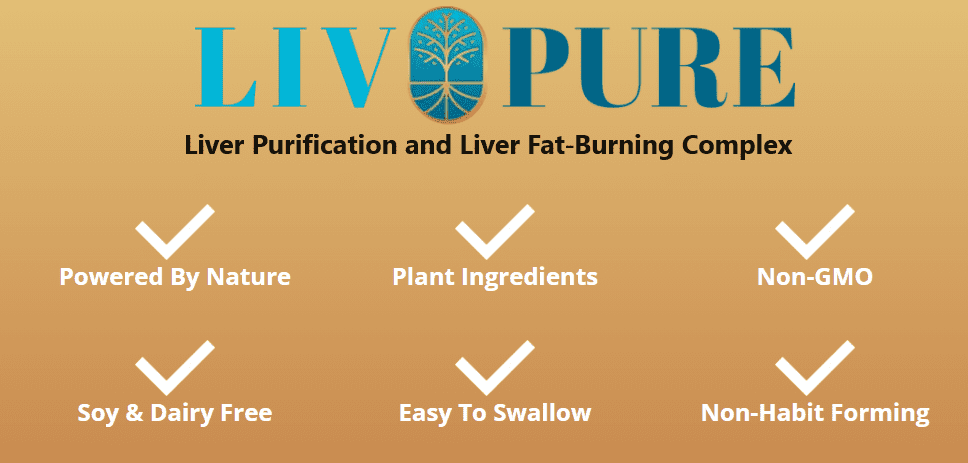Achieving and maintaining optimal health and fitness is a multifaceted journey that requires dedication, knowledge, and the right strategies. This comprehensive guide provides valuable insights, practical tips, and expert advice to help you improve your overall well-being and fitness levels. By incorporating these principles into your daily routine, you can unlock your best health and enjoy a more vibrant, active life.
Nutrition Tips
Balanced Diet Essentials
A balanced diet is fundamental to achieving optimal health. Focus on incorporating a variety of nutrient-dense foods into your meals. Aim for a mix of fruits, vegetables, lean proteins, whole grains, and healthy fats. These foods provide essential vitamins, minerals, and antioxidants that support bodily functions and overall health.
Ingredients to Avoid
When reading ingredient labels, be mindful of certain additives and ingredients that can negatively impact your health:
- Seed Oils: Avoid oils like canola, soybean, and corn oil, which are high in omega-6 fatty acids and can promote inflammation.
- Excessive Sugar: High sugar intake can lead to weight gain, insulin resistance, and other health issues. Watch out for hidden sugars in processed foods.
- Excessive Sodium: Too much sodium can raise blood pressure and increase the risk of heart disease. Limit intake by avoiding processed and packaged foods.
- Excessive Carbohydrates: Especially refined carbs, can spike blood sugar levels and contribute to weight gain.
- Bio-Engineered or GMO Ingredients: These can have uncertain long-term health effects. Opt for organic and non-GMO labeled foods when possible.
- Pesticides: Foods like strawberries, spinach, and apples are often heavily sprayed with pesticides. Choose organic versions of these foods to reduce exposure.
Organic Foods: Safe and Nutritious Choices

Benefits of Organic Foods
Organic foods are grown without the use of synthetic pesticides, fertilizers, genetically modified organisms (GMOs), and other artificial additives, making them a healthier choice for consumers and the environment. By avoiding these harmful chemicals, organic farming helps to preserve the integrity of the soil, protect water quality, and promote biodiversity. Organic crops are often richer in nutrients and antioxidants compared to conventionally grown counterparts because they are cultivated in healthier, more balanced soils. Additionally, organic farming practices typically focus on crop rotation, composting, and natural pest control methods, which contribute to a more sustainable and eco-friendly agricultural system.
Choosing organic foods can significantly reduce your exposure to harmful chemicals, which have been linked to various health issues, including hormone disruption, neurological problems, and cancer. By opting for organic produce, dairy, and meat, you are not only prioritizing your health but also supporting farming practices that are better for the planet. Sustainable farming practices associated with organic agriculture help to combat climate change by reducing greenhouse gas emissions and increasing carbon sequestration in the soil. Moreover, supporting organic farmers encourages the growth of environmentally friendly practices and helps ensure that future generations will have access to clean, healthy food. Thus, choosing organic is a step towards a healthier lifestyle and a more sustainable world.
Safe and Healthy Organic Foods
Incorporating organic foods into your diet can enhance your overall health and reduce your exposure to harmful substances. Some top organic foods to consider include:
- Fruits: Organic apples, berries (strawberries, blueberries, raspberries), oranges, and grapes are delicious and free from synthetic pesticides.
- Vegetables: Leafy greens (spinach, kale, lettuce), carrots, tomatoes, cucumbers, and bell peppers are nutritious and safer when grown organically.
- Dairy Products: Organic milk, yogurt, and cheese come from animals that are not treated with synthetic hormones or antibiotics.
- Meat and Poultry: Organic chicken, beef, and pork are raised without the use of growth hormones and antibiotics, ensuring a cleaner, healthier source of protein.
- Grains and Legumes: Organic oats, quinoa, lentils, and beans are excellent sources of fiber and nutrients, free from chemical residues.
- Nuts and Seeds: Organic almonds, walnuts, chia seeds, and flaxseeds provide healthy fats and proteins without the risk of pesticide contamination.
The Benefits Of Eating Meat

Eating meat offers numerous nutritional benefits, making it a valuable component of a balanced diet. Meat is an excellent source of high-quality protein, which is essential for muscle growth, repair, and overall bodily function. It contains all the essential amino acids that the body cannot synthesize on its own, making it a complete protein source. Additionally, meat is rich in essential vitamins and minerals such as vitamin B12, iron, zinc, and selenium. Vitamin B12, found almost exclusively in animal products, is crucial for red blood cell formation and neurological function.
Iron from meat, especially red meat, is in the heme form, which is more easily absorbed by the body compared to non-heme iron from plant sources. This makes meat particularly beneficial in preventing iron-deficiency anemia, especially for individuals with higher iron needs like pregnant women and athletes.
Beyond its nutritional value, eating meat can also support overall health and well-being. The nutrients found in meat contribute to better immune function, cognitive performance, and energy levels. Zinc, for example, plays a critical role in immune system support and wound healing. Selenium acts as an antioxidant, protecting cells from damage. Moreover, the consumption of meat can aid in maintaining healthy skin, hair, and nails due to its rich supply of essential fatty acids and vitamins.
Incorporating moderate amounts of lean meats, such as poultry and fish, into your diet can also support cardiovascular health by providing beneficial omega-3 fatty acids, which are known to reduce inflammation and improve heart health. Thus, while it is important to consume meat in moderation and choose lean cuts, its inclusion in a balanced diet can contribute significantly to meeting nutritional needs and supporting overall health.
Why Cooking With Non-Stick Cookware is Unhealthy

Cooking with non-stick pans can be unhealthy due to the chemicals used in their coating, such as perfluorooctanoic acid (PFOA) and polytetrafluoroethylene (PTFE), commonly known as Teflon. When these pans are overheated, they can release toxic fumes that may cause flu-like symptoms known as “Teflon flu” or polymer fume fever in humans and can be lethal to birds. Additionally, over time, the non-stick coating can degrade and potentially flake off into food, leading to ingestion of harmful substances. For healthier cooking alternatives, consider using stainless steel, cast iron, or ceramic-coated pans.
Stainless steel pans are durable, resistant to scratching, and do not leach chemicals into food. Cast iron pans, when properly seasoned, provide a natural non-stick surface and can add beneficial iron to your diet. Ceramic-coated pans offer a non-toxic, non-stick option without the risks associated with traditional non-stick coatings. These alternatives not only enhance safety but also provide superior cooking performance and longevity.
Why You Should Cook With Wood Utensils Instead Of Plastic Utensils

Cooking with wood utensils is better than using plastic utensils for several reasons. Wood utensils are made from natural materials and do not contain harmful chemicals like bisphenol A (BPA) or phthalates, which can leach into food when heated. They are also more heat-resistant and do not melt or release toxins when exposed to high temperatures. Wood is gentle on cookware, particularly non-stick surfaces and stainless steel, reducing the risk of scratches and extending the life of your pans.
Additionally, wooden utensils have natural antibacterial properties and, with proper care, can last for years, making them an eco-friendly and sustainable choice for your kitchen. By opting for wood over plastic, you minimize exposure to potentially hazardous substances and contribute to a healthier, more environmentally conscious lifestyle.
Why You Should Cook Food In Ghee, Tallow or Grass-Fed Butter

Cooking with ghee, tallow, or grass-fed butter is highly recommended due to their nutritional benefits and stability at high temperatures. These fats are rich in healthy saturated fats, fat-soluble vitamins like A, D, E, and K, and conjugated linoleic acid (CLA), which can support heart health, immune function, and overall well-being. Unlike many vegetable oils, ghee, tallow, and grass-fed butter have high smoke points, meaning they do not break down and release harmful free radicals or toxins when heated.
In contrast, oils such as canola, soybean, corn, and sunflower oil should be avoided for cooking. These oils are often highly processed, contain unhealthy levels of omega-6 fatty acids, and can become rancid or produce toxic compounds when exposed to high heat, posing risks to your health. Opting for traditional fats like ghee, tallow, and grass-fed butter ensures safer cooking and adds beneficial nutrients to your diet.
Exercise Routines
Creating a Balanced Workout Plan

A well-rounded exercise routine is essential for achieving comprehensive fitness and overall well-being. Incorporating various types of workouts ensures that all aspects of physical fitness are targeted, leading to balanced and effective results. Cardiovascular exercises, such as running, cycling, swimming, and brisk walking, are crucial for improving heart health and increasing endurance.
These activities elevate your heart rate, improve circulation, and help burn calories, making them vital for maintaining a healthy weight and reducing the risk of cardiovascular diseases. Additionally, engaging in high-intensity interval training (HIIT) can provide a more efficient cardio workout by alternating between short bursts of intense activity and periods of rest or lower-intensity exercise.
Strength training is another key component of a well-rounded exercise routine. It involves exercises designed to build muscle mass, enhance bone density, and boost metabolism. Effective strength training exercises include weightlifting, using resistance bands, and bodyweight exercises like push-ups, squats, lunges, and planks.
These exercises target major muscle groups and help improve overall strength and endurance. Incorporating compound movements, such as deadlifts, bench presses, and rows, can maximize the benefits by engaging multiple muscle groups simultaneously. Aim to perform strength training exercises at least two to three times a week, allowing for adequate recovery between sessions to prevent overtraining and injury.
Flexibility exercises are equally important in a comprehensive fitness plan. They help enhance the range of motion, reduce muscle stiffness, and prevent injuries. Activities such as yoga, Pilates, and dynamic stretching routines are excellent for improving flexibility and promoting relaxation. Yoga, in particular, offers additional benefits such as improved balance, mental clarity, and stress relief. Incorporating a variety of poses, including forward bends, twists, and inversions, can help stretch and strengthen different muscle groups.
Dynamic stretching, which involves moving parts of your body through a full range of motion, can be especially beneficial when performed as part of a warm-up routine to prepare muscles for more intense activity. By integrating these various types of workouts into your routine, you can achieve a holistic approach to fitness that supports overall health and enhances physical performance.
Customizing Your Routine
Tailoring your workout plan to your fitness level, goals, and preferences is essential for creating a sustainable and effective fitness routine. As a beginner, start with foundational exercises that build basic strength, endurance, and flexibility. Incorporate low-impact cardiovascular activities like walking or swimming, and use lighter weights or bodyweight exercises to develop muscle strength.
Gradually increase the intensity and complexity of your workouts as you build confidence and physical capacity. For advanced athletes, a tailored plan might include more specialized and intense training, such as high-intensity interval training (HIIT), advanced strength training techniques, or sport-specific drills that target particular skills and muscle groups. Setting clear, achievable goals can help you stay focused and measure your progress over time.
Regardless of your fitness level, consistency is key to seeing progress and staying motivated. Regular exercise helps establish a routine, making it easier to maintain long-term. To keep things interesting and prevent burnout, vary your workouts by trying different exercises and incorporating new challenges. For example, mix up your cardio sessions with running, cycling, and group fitness classes, or alternate between free weights, resistance bands, and gym machines for strength training.
Listening to your body and allowing for rest and recovery days is also crucial to avoid overtraining and injury. By consistently following a workout plan tailored to your unique needs and interests, you can achieve steady improvements in your fitness and overall health.
Strength Training
Benefits of Strength Training

>Strength training plays a crucial role in enhancing overall health by building muscle, increasing bone density, and boosting metabolism. When you engage in strength training, such as lifting weights, performing resistance exercises, or using bodyweight movements like squats and push-ups, you stimulate muscle growth and improve muscle strength. This not only enhances physical appearance and performance but also supports everyday activities, making tasks like lifting, carrying, and climbing stairs easier and more efficient. Additionally, increased muscle mass contributes to a higher resting metabolic rate, meaning your body burns more calories even when at rest, which can aid significantly in weight management and fat loss.
Moreover, strength training is essential for maintaining and improving bone density, particularly as we age. Weight-bearing exercises stimulate bone growth and can help prevent osteoporosis, reducing the risk of fractures and bone-related injuries. Incorporating a variety of strength training exercises into your routine also aids in injury prevention by strengthening the muscles, tendons, and ligaments that support your joints. This increased stability and resilience can help protect against strains, sprains, and other common injuries. By integrating regular strength training sessions into your fitness regimen, you not only enhance your physical capabilities and appearance but also support long-term health and functional independence.
Effective Strength Training Exercises
Incorporating exercises like squats, deadlifts, bench presses, and rows into your fitness routine is highly beneficial due to their nature as compound movements. Compound exercises involve multiple joints and muscle groups, allowing you to maximize your workout efficiency and effectiveness. For instance, squats engage the quadriceps, hamstrings, glutes, and core muscles, making them an excellent choice for building lower body strength and stability.
Similarly, deadlifts target the back, glutes, hamstrings, and core, contributing to overall body strength and functional fitness. These exercises not only enhance muscle growth but also improve coordination and balance, which are essential for daily activities and athletic performance.
Bench presses and rows are equally important for developing upper body strength. The bench press primarily targets the chest, shoulders, and triceps, while also engaging the core for stabilization. Rows, on the other hand, focus on the muscles of the back, including the lats, rhomboids, and traps, as well as the biceps and forearms. By including these compound movements in your routine, you ensure a balanced workout that addresses all major muscle groups.
Moreover, compound exercises tend to burn more calories compared to isolation exercises, aiding in weight management and overall fitness. Regularly performing these foundational exercises can lead to significant improvements in muscle strength, endurance, and overall physical health, making them indispensable components of any well-rounded fitness program.
Cardio Workouts
Importance of Cardiovascular Exercise

Cardio workouts are essential for enhancing overall cardiovascular health, boosting endurance, and promoting calorie burning, which are vital for maintaining a healthy weight and reducing the risk of chronic diseases. Activities such as running, cycling, swimming, and brisk walking elevate your heart rate, improve blood circulation, and strengthen the heart muscle, leading to better cardiovascular efficiency. Regular cardio exercise helps lower blood pressure, reduce bad cholesterol levels, and increase good cholesterol, all of which contribute to a healthier heart.
Additionally, the increased endurance gained from consistent cardio workouts makes daily activities easier and enhances athletic performance. By burning significant calories, cardio exercises aid in weight management, preventing obesity and related conditions such as type 2 diabetes, heart disease, and certain cancers. Incorporating various forms of cardio into your fitness routine is a powerful strategy to improve overall health and longevity.
Popular Cardio Activities
Activities such as running, cycling, swimming, and brisk walking are excellent options for incorporating cardio into your fitness routine due to their effectiveness in elevating heart rate and improving cardiovascular health. Running, for instance, is a high-impact exercise that strengthens the heart and lungs while also boosting leg muscles. Cycling provides a low-impact alternative that can be adjusted for intensity, making it suitable for all fitness levels.
Swimming is another low-impact option that offers a full-body workout, enhancing muscle strength and endurance while being gentle on the joints. Brisk walking is a simple yet effective way to increase heart rate and improve circulation, making it accessible for individuals at any fitness level. To reap the maximum health benefits, aim for at least 150 minutes of moderate-intensity cardio each week, which can be broken down into 30-minute sessions, five days a week. This routine helps ensure you maintain a healthy weight, boost endurance, and reduce the risk of chronic diseases.
Rest and Recovery
Significance of Rest

Rest and recovery are critical components of any fitness regimen because they allow your body to repair and strengthen itself, ultimately preventing overtraining and injury. During periods of rest, muscle tissues that have been broken down during workouts have the opportunity to rebuild, leading to increased strength and endurance. Adequate recovery time also helps replenish energy stores and reduce muscle soreness, making it easier to maintain a consistent exercise routine.
Furthermore, rest days give the nervous system a chance to recuperate, which is essential for optimal performance and mental well-being. Ignoring the need for rest can lead to overtraining, which increases the risk of injuries such as strains, sprains, and stress fractures, and can also cause burnout, reducing motivation and overall progress. By incorporating rest and recovery into your fitness plan, you ensure that your body remains resilient, balanced, and capable of continuous improvement.
Optimizing Recovery

Ensuring you get 7-9 hours of quality sleep each night is fundamental for optimal recovery and overall health. Quality sleep allows your body to perform critical repair processes, such as muscle recovery, hormone regulation, and immune system strengthening. Additionally, incorporating rest days into your workout schedule is essential to prevent overtraining and give your muscles time to repair and grow stronger.
On rest days, consider incorporating practices like stretching, foam rolling, and massage to aid recovery. Stretching helps maintain flexibility and relieve muscle tension, while foam rolling can break down muscle knots and improve blood circulation, accelerating recovery. Massages further enhance muscle relaxation and reduce soreness, promoting a quicker return to peak performance. Together, these recovery practices ensure that your body is well-rested, resilient, and ready for the next workout.
Hydration Tips
Staying Hydrated
Proper hydration is essential for maintaining various bodily functions that are crucial for overall health and well-being. Adequate water intake supports digestion by helping break down food and facilitating the absorption of nutrients in the intestines. It also plays a vital role in joint lubrication, reducing friction and cushioning joints to prevent discomfort and injury. Additionally, staying hydrated helps regulate body temperature through processes like sweating and respiration, ensuring that your body can efficiently manage heat.
Aim to drink at least 8 glasses of water a day to meet your hydration needs, and increase this amount if you’re physically active or exposed to hot environments. Drinking sufficient water not only supports these critical functions but also boosts energy levels, improves cognitive function, and enhances physical performance, making it a fundamental aspect of a healthy lifestyle.
Hydration Strategies
Staying adequately hydrated requires intentional effort and simple strategies that can be seamlessly integrated into your daily routine. Carrying a water bottle with you throughout the day serves as a constant reminder to drink water and ensures you have access to hydration wherever you are. Setting reminders on your phone or using hydration apps can help you track your water intake and prompt you to drink regularly, preventing dehydration.
In addition to drinking water, incorporating water-rich foods into your diet can significantly contribute to your overall hydration. Foods such as cucumbers, watermelons, strawberries, oranges, and lettuce have high water content and provide essential vitamins and minerals, further supporting your hydration efforts. By adopting these practices, you can maintain optimal hydration levels, which are crucial for bodily functions such as digestion, nutrient absorption, joint lubrication, and temperature regulation.
Mental Health
Importance of Mental Well-Being
Mental health is just as important as physical health because it fundamentally influences every aspect of our lives, including how we think, feel, and act. Good mental health enables us to cope with the normal stresses of life, work productively, and contribute to our communities. It plays a critical role in our relationships, decision-making, and the ability to manage emotions and behavior.
Mental health is essential for overall well-being, as it affects our physical health too; for example, chronic stress and anxiety can lead to physical ailments such as heart disease and weakened immune function. Therefore, prioritizing mental health through practices like mindfulness, therapy, regular physical activity, and maintaining a supportive social network is crucial for a balanced and fulfilling life.
Enhancing Mental Health
To maintain and improve mental health, it’s important to practice mindfulness, engage in regular physical activity, maintain social connections, and seek professional help if needed. Mindfulness techniques such as meditation and deep breathing exercises can enhance mental clarity, increase self-awareness, and reduce stress by helping you stay present and focused. Regular physical activity, including exercises like yoga, not only benefits physical health but also releases endorphins that improve mood and alleviate anxiety.
Social connections with friends and family provide emotional support and a sense of belonging, which are essential for mental well-being. Additionally, if you experience persistent mental health issues, seeking professional help from a therapist or counselor can provide valuable tools and strategies to manage and overcome these challenges. Incorporating these practices into your routine can significantly enhance your mental health and overall quality of life.
Stress Management
Managing Stress Effectively

Chronic stress can have detrimental effects on your health, leading to issues such as high blood pressure, weakened immune function, anxiety, depression, and even heart disease. It can also impair cognitive functions, including memory and concentration, and negatively impact your overall quality of life. Therefore, it is crucial to adopt effective stress management techniques to maintain a balanced and healthy life. Practices such as regular physical activity, mindfulness meditation, deep breathing exercises, and yoga can help reduce stress levels by promoting relaxation and improving your ability to cope with daily challenges.
Additionally, maintaining a healthy work-life balance, engaging in hobbies, and ensuring adequate sleep are important strategies for managing stress. Seeking support from friends, family, or mental health professionals can also provide essential guidance and relief. By integrating these stress management techniques into your routine, you can protect your physical and mental health, leading to a more balanced and fulfilling life.
Techniques for Stress Relief
Engaging in regular physical activity is essential for reducing stress levels, as exercise releases endorphins that boost mood and promote relaxation. Incorporating deep breathing exercises into your daily routine can also help manage stress by calming the mind and reducing anxiety. Prioritizing sleep is crucial, as adequate rest allows your body and mind to recover from daily stresses and maintain overall well-being.
Additionally, making time for hobbies and activities you enjoy can provide a much-needed break from daily responsibilities and enhance your sense of fulfillment and happiness. Developing a routine that includes these relaxation techniques, such as regular physical activity, deep breathing, sufficient sleep, and engaging in enjoyable activities, can significantly reduce stress levels and improve your quality of life.
Flexibility Exercises
Benefits of Flexibility

Flexibility exercises are crucial for enhancing the range of motion, which allows for more fluid and efficient movements during physical activities. By regularly incorporating stretching into your fitness routine, you can significantly reduce the risk of injuries, such as muscle strains and joint sprains, by ensuring that your muscles and tendons are more pliable and less prone to tearing. Improved flexibility also contributes to better overall physical performance, whether in sports, daily activities, or other forms of exercise, by allowing you to move more freely and with greater coordination.
Stretching exercises, such as dynamic stretches before a workout and static stretches afterward, help maintain muscle health and prevent stiffness, making them an essential component of a balanced fitness regimen. By dedicating time to flexibility training, you enhance your body’s ability to handle various physical demands, ultimately supporting long-term health and fitness goals.
Effective Flexibility Practices
Incorporating stretching exercises, yoga, and Pilates into your fitness routine can greatly enhance your flexibility, balance, and overall physical well-being. Stretching exercises help elongate the muscles and improve joint range of motion, making everyday movements easier and reducing the likelihood of injuries. Yoga combines stretching with strength and mindfulness, promoting not only physical flexibility but also mental relaxation and stress relief.
Pilates focuses on core strength, stability, and precise movements, which can improve posture and alignment. To maximize the benefits, aim to stretch major muscle groups—such as the legs, back, shoulders, and arms—at least two to three times a week. This regular practice helps maintain muscle elasticity, improves circulation, and contributes to a more balanced and effective fitness regimen. By consistently including these activities, you can enhance your overall fitness and well-being, making your body more resilient and better prepared for a variety of physical challenges.
Healthy Lifestyle
Adopting a Healthy Lifestyle
A healthy lifestyle goes beyond just diet and exercise; it encompasses a holistic approach to well-being that includes mental health, social connections, and a balanced approach to life’s demands. Mental health is a crucial component, as managing stress, practicing mindfulness, and seeking support when needed are essential for maintaining a positive outlook and emotional stability.
Social connections play a significant role, providing a sense of belonging and emotional support that can enhance overall happiness and reduce feelings of isolation. Balancing life’s demands involves managing work, personal responsibilities, and leisure in a way that promotes harmony and prevents burnout. By nurturing all these aspects—physical, mental, and social—you’re more likely to achieve sustained health and happiness, leading to a more fulfilling and resilient life.
Strategies for a Healthy Lifestyle

Developing healthy habits such as regular exercise, balanced nutrition, adequate sleep, and effective stress management is essential for achieving and maintaining optimal health. Regular exercise keeps your body fit and strong, while balanced nutrition ensures you receive the necessary vitamins and minerals to support bodily functions. Adequate sleep allows your body to rest and recover, promoting both physical and mental well-being. Managing stress through techniques like mindfulness, meditation, and relaxation practices helps maintain emotional balance and prevents chronic health issues.
Surrounding yourself with a supportive community provides emotional and social support, which can enhance your motivation and overall happiness. Striving to create a balanced, fulfilling life means integrating these healthy habits into your daily routine, ensuring you take time for self-care and enjoy activities that bring you joy and satisfaction. By doing so, you build a strong foundation for long-term health and well-being.
Foods to Avoid Due to Pesticides
Commonly Contaminated Foods
Some foods are more likely to be contaminated with pesticides. Be cautious with:
- Strawberries
- Spinach
- Apples
- Grapes
- Tomatoes
Choosing Safer Options
Whenever possible, opt for organic versions of fruits and vegetables to minimize exposure to harmful pesticides and chemicals. Organic produce is grown without synthetic pesticides, herbicides, and fertilizers, making it a healthier choice for you and the environment. If purchasing organic options is not feasible, make sure to thoroughly wash and peel conventionally grown produce to reduce the pesticide residue. Using a vegetable brush and rinsing under running water can help remove surface contaminants.
For foods with edible skins, such as apples, cucumbers, and tomatoes, this practice is especially important. By taking these steps, you can significantly lower your intake of potentially harmful substances while still enjoying the nutritional benefits of fresh fruits and vegetables.
Conclusion
Achieving optimal health and fitness is a holistic journey that requires a balanced approach encompassing nutrition, exercise, rest, hydration, and mental well-being. Nutrition forms the foundation of good health, and by choosing nutrient-dense foods, avoiding harmful ingredients, and staying properly hydrated, you provide your body with the essential fuel it needs. Regular exercise, including a mix of strength training, cardio workouts, and flexibility exercises, ensures that your body remains strong, agile, and resilient.
Equally important is allowing your body adequate rest and recovery time, which includes quality sleep and relaxation techniques to prevent overtraining and reduce the risk of injury. Mental well-being is integral to this journey; practices such as mindfulness, stress management, and maintaining social connections help sustain your emotional and psychological health, making it easier to stay motivated and focused on your goals.
Incorporating these expert tips and strategies into your daily routine can lead to significant improvements in your overall health, enabling you to live a more vibrant and active life. Consistency and dedication are essential for long-term success, so it’s important to remain committed to your health and fitness goals even when faced with challenges. Embrace the process as a continuous journey rather than a final destination, celebrating small victories along the way and learning from any setbacks.
By fostering a positive attitude and a sustainable approach to health, you’ll not only achieve your fitness goals but also enjoy the journey towards a healthier, happier you. Remember that every step you take towards better health is an investment in your future well-being, allowing you to enjoy a higher quality of life for years to come.
FAQs on Health and Fitness
1. What are the best foods to include in a balanced diet?
Answer: A balanced diet should include a variety of nutrient-dense foods such as fruits, vegetables, lean proteins, whole grains, and healthy fats. Examples include leafy greens, berries, lean meats like chicken and fish, whole grains like quinoa and brown rice, and healthy fats from avocados, nuts, and seeds.
2. How often should I exercise to see results?
Answer: To see results, aim to exercise at least 150 minutes of moderate-intensity aerobic activity or 75 minutes of vigorous-intensity activity per week, combined with muscle-strengthening activities on two or more days per week. Consistency is key to achieving and maintaining fitness goals.
3. What are the benefits of strength training?
Answer: Strength training helps build muscle mass, increase bone density, boost metabolism, and improve overall strength and endurance. It can also aid in weight management and reduce the risk of chronic diseases such as osteoporosis and diabetes.
4. How can I improve my cardiovascular fitness?
Answer: To improve cardiovascular fitness, engage in regular cardio workouts such as running, cycling, swimming, or brisk walking. Aim for at least 150 minutes of moderate-intensity cardio each week, gradually increasing intensity and duration as your fitness improves.
5. What is the importance of rest and recovery in a fitness routine?
Answer: Rest and recovery are crucial for allowing your body to repair and strengthen itself, preventing overtraining and reducing the risk of injury. Ensure you get 7-9 hours of quality sleep each night and incorporate rest days into your workout schedule.
6. How much water should I drink daily?
Answer: The recommended daily water intake is about 8 glasses (64 ounces) of water a day, though individual needs can vary based on factors like activity level, climate, and overall health. Staying hydrated is essential for bodily functions such as digestion, nutrient absorption, and temperature regulation.
7. How can I manage stress effectively?
Answer: Effective stress management techniques include regular physical activity, deep breathing exercises, mindfulness practices, maintaining social connections, and setting aside time for hobbies and relaxation. Prioritizing sleep and seeking professional help when needed can also help manage stress.
8. What are the best flexibility exercises to include in my routine?
Answer: Effective flexibility exercises include stretching major muscle groups, yoga, and Pilates. Focus on incorporating these exercises into your routine at least two to three times a week to improve range of motion, reduce the risk of injury, and enhance overall physical performance.
9. What ingredients should I avoid in my diet?
Answer: Avoid ingredients like seed oils (canola, soybean, corn oil), excessive sugar, excessive sodium, excessive refined carbohydrates, bio-engineered or GMO ingredients, and foods heavily sprayed with pesticides. Opt for organic and whole foods to reduce exposure to these harmful substances.
10. Are organic foods really better for you?
Answer: Organic foods are grown without synthetic pesticides, fertilizers, GMOs, and artificial additives, making them a safer and healthier option. They often have higher nutrient levels and can reduce your exposure to harmful chemicals, supporting overall health and well-being.
 Transform your weight loss journey with Alpilean Weight Loss Support Solution. Our innovative formula is designed to provide comprehensive support in your quest for a healthier and slimmer you. Alpilean combines the power of natural ingredients to boost your metabolism, control cravings, and enhance your energy levels, making it easier than ever to reach your weight loss goals. By clicking the link, you’ll open the door to a world of effective, science-backed weight loss support that can help you shed those extra pounds and feel more confident in your own skin. Don’t miss the opportunity to take charge of your health and wellness with Alpilean – your path to a fitter, happier you begins with just one click. Click Here To For The Alpilean Weight Loss Support Solution!
Transform your weight loss journey with Alpilean Weight Loss Support Solution. Our innovative formula is designed to provide comprehensive support in your quest for a healthier and slimmer you. Alpilean combines the power of natural ingredients to boost your metabolism, control cravings, and enhance your energy levels, making it easier than ever to reach your weight loss goals. By clicking the link, you’ll open the door to a world of effective, science-backed weight loss support that can help you shed those extra pounds and feel more confident in your own skin. Don’t miss the opportunity to take charge of your health and wellness with Alpilean – your path to a fitter, happier you begins with just one click. Click Here To For The Alpilean Weight Loss Support Solution!




































